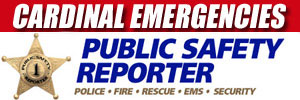The act of driving is so engrained into our everyday lives that, oftentimes, we forget how dangerous it can be. In fact, from speeding and general carelessness to distractions and dangerous environmental conditions, there are thousands of different factors that can cause an accident. But since we can’t control what other drivers are doing, the best way to ensure that we’re safe behind the wheel is to focus on improving our own driving habits. This way, we know how to respond in dangerous situations and have the means to properly do so. This is how to become a safer driver and better protect yourself, as well as those around you, on the road.
Know What All Road Markings Mean
Though you must know the different types of road signs and what they mean before you can be issued a driver’s license, it never hurts to refresh this knowledge. As a person gains experience in driving, it’s common for them to become comfortable and begin overlooking key indicators. Periodically brushing up on the different rules of the road and staying up-to-date on important driving regulations allows you to better react in certain situations. Additionally, familiarizing yourself with even some of the more obscure signs keeps you from being surprised when you inevitably come across one of them.
Reduce Distractions and Keep Yourself Focused
Becoming a safer driver also involves eliminating distractions and knowing how to keep yourself alert while driving. Whether it be food, loud music, our phones, or even one of our passengers, driving has no shortage of potential distractions that can cause you to miss potential hazards and cause an accident. As such, you must find effective ways to keep yourself focused and remove these distractions before they can create a problem. This could mean turning your phone off while you’re driving or asking your passengers to let you concentrate on the road.
Slow Down in Hazardous Conditions
It’s important to mention that while speed signs are there to convey the speed limit in ideal conditions, this doesn’t mean you can’t go slower should the situation arise. Adjusting our driving speed to the conditions around us is an instinct that all drivers must have to be successful. After all, if you continue to drive as quickly in heavy rain as you would on a clear day, you’re bound to hydroplane. So, make sure that you’re changing your driving to accommodate new risks that you come across—without going under a minimum speed limit if one is listed.
Put Yourself in a Position to React
Most importantly, know how to position your vehicle so that you can react to sudden dangers. This means keeping a safe distance from the car in front of you and ensuring that you have enough space to stop suddenly if you need to. As a general rule, it’s recommended that you keep your car about three seconds behind the one in front of you, and double that time in harsh weather conditions.
facebook …
GET ALERTS on Facebook.com/CardinalEmergencies
GET ALERTS on Facebook.com/ArlingtonCardinal
Stay informed with news from PublicSafetyReporter.com’s Emergencies Behind the Scenes Facebook page — Facebook.com/CardinalEmergencies.

